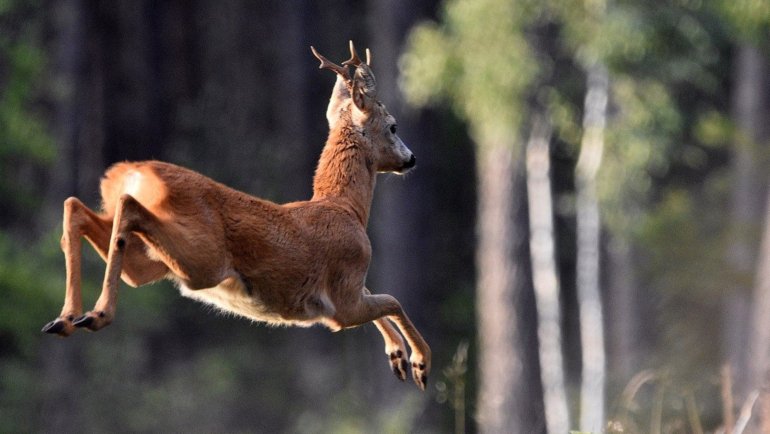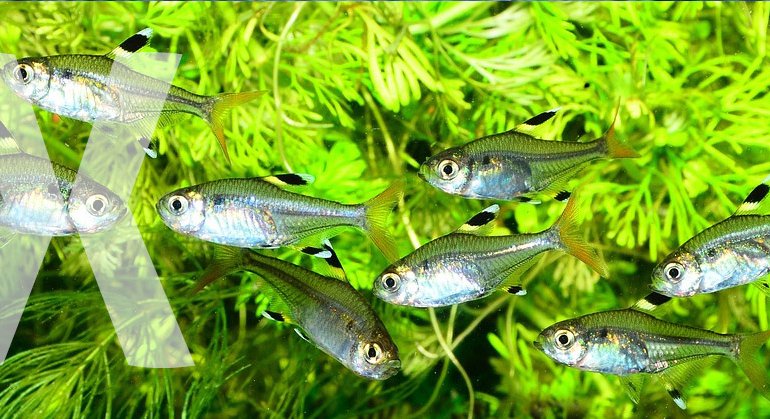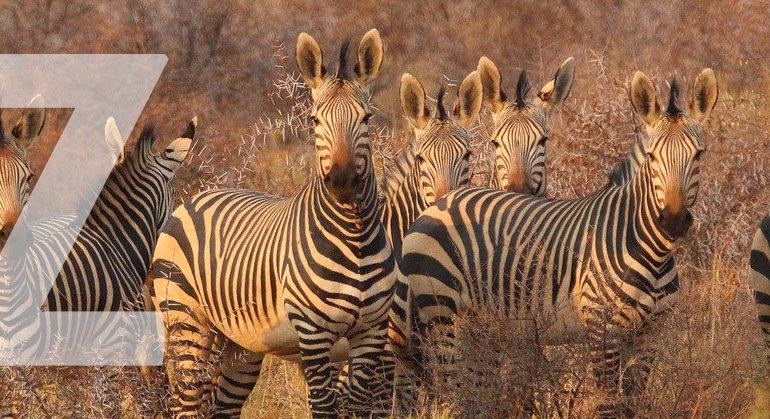Nature, with its dynamic evolutionary processes, has bestowed certain creatures with heads that are remarkably large in comparison to their body size. But what’s the story behind these outsized craniums?
Whether it’s to accommodate specialized sensory organs, to exhibit dominance and power, or to simply munch on their favorite foods, each of these animals carries their big head with a unique evolutionary purpose.
Dive with us into the fascinating world of animals with big heads and discover the reasons behind their distinctive appearances.
10 Animals With Big Heads From Around The World
Hammerhead Shark
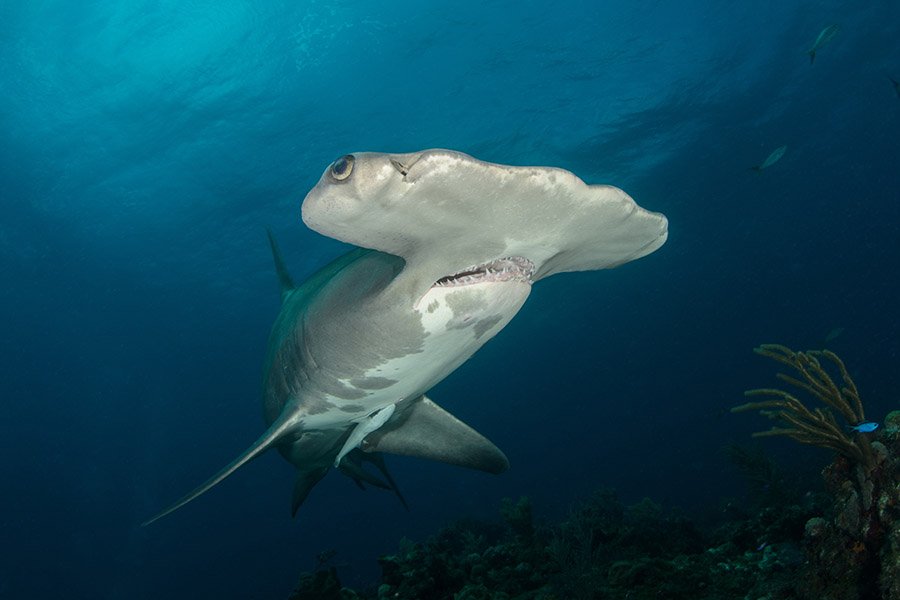
- Scientific Name: Sphyrnidae (family that encompasses all hammerhead sharks)
- Type of Animal: Fish
- Where Found: Tropical and warm temperate seas worldwide.
Slicing through the waters with a head shaped unmistakably like a hammer, the hammerhead shark is a spectacle of marine evolution. This unique head structure, known as a cephalofoil, isn’t just for show. It provides the shark with a heightened sense of vision, as their eyes are positioned on the far ends, allowing for a better depth perception.
Additionally, the wide spread of the cephalofoil helps these sharks scan larger areas for prey using their electro-sensory organs.
Did you know? The different species of hammerhead sharks vary in the width and shape of their “hammers,” with some being wide and flat while others are more curved or narrow.
Chameleon
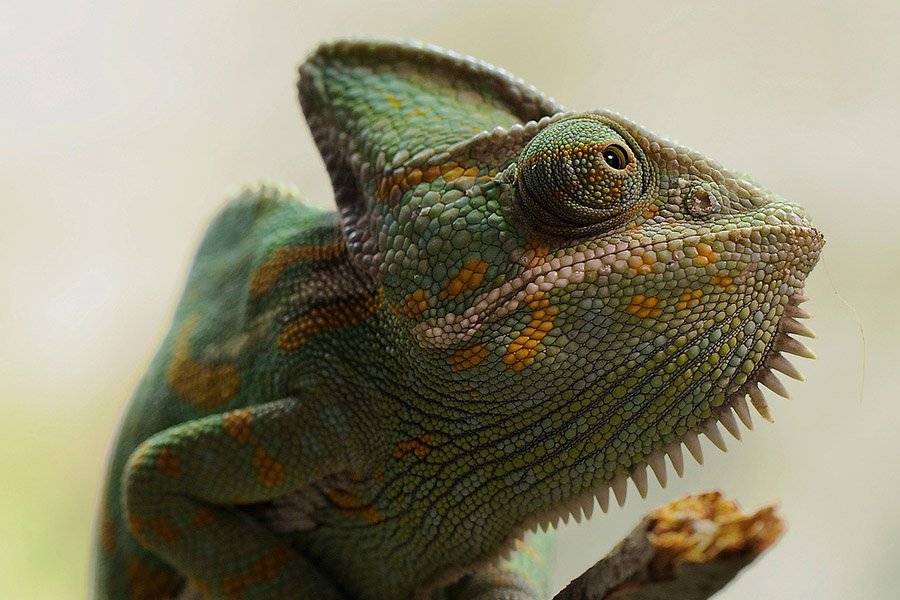
- Scientific Name: Chamaeleonidae (family that encompasses all chameleons)
- Type of Animal: Reptile
- Where Found: Primarily in Africa and Madagascar, but also in southern Europe, and Asia.
Masters of disguise, chameleons are renowned for their color-changing abilities, but their large, turret-like heads are equally fascinating. This bulbous head is equipped with eyes that can move independently of each other, offering a 360-degree view of their surroundings — a crucial advantage when hunting insects or watching out for predators.
The solid helmet-like structure also helps protect their brain, and the high, crest-like casque on some species might be used for collecting and directing water.
Did you know? Chameleons have an extremely long tongue, sometimes up to twice the length of their body (excluding the tail), which they shoot out in a fraction of a second to capture prey.
Tyrannosaurus rex
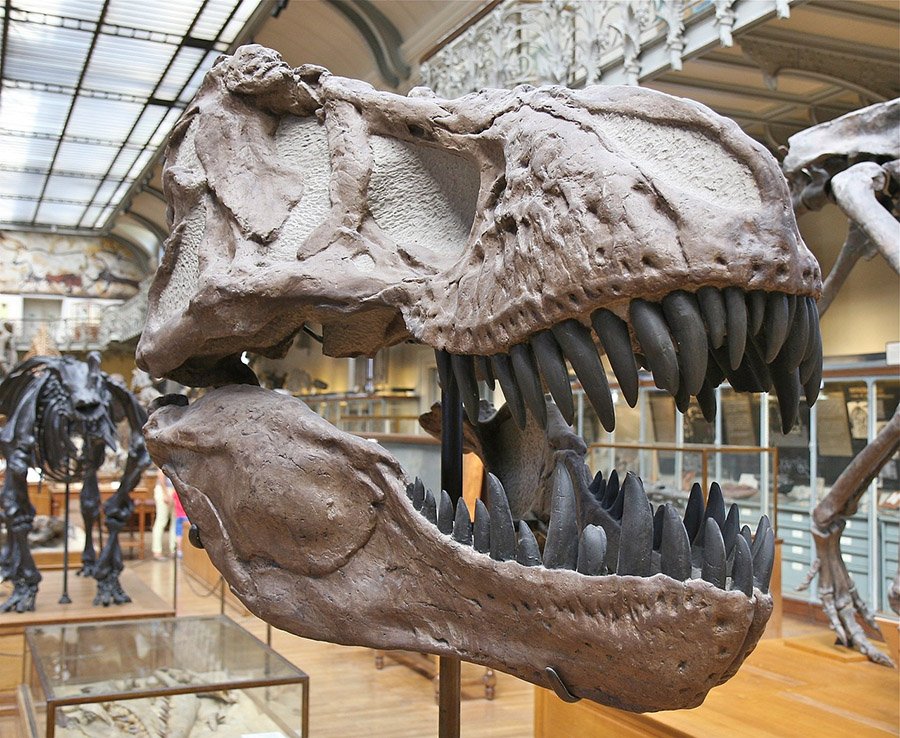
- Scientific Name: Tyrannosaurus rex
- Type of Animal: Reptile (Dinosaur / theropod)
- Where Found: Present-day North America (during the Late Cretaceous period).
The Tyrannosaurus rex, often referred to as T. rex, stands as one of the most iconic dinosaurs, and its massive head is a significant part of its fearsome reputation. This giant predator had a skull that could reach up to 5 feet in length.
Packed with sharp, banana-sized teeth, its strong jaw could bite down with an incredible force, enabling it to crush bone and consume its prey effectively. The large size of its head and jaws was offset by its powerful neck muscles, which allowed it to deliver deadly bites.
Did you know? The T. rex had binocular vision, meaning it could focus on prey with both its eyes simultaneously, providing it with a better depth perception than most other dinosaurs.
Gorilla
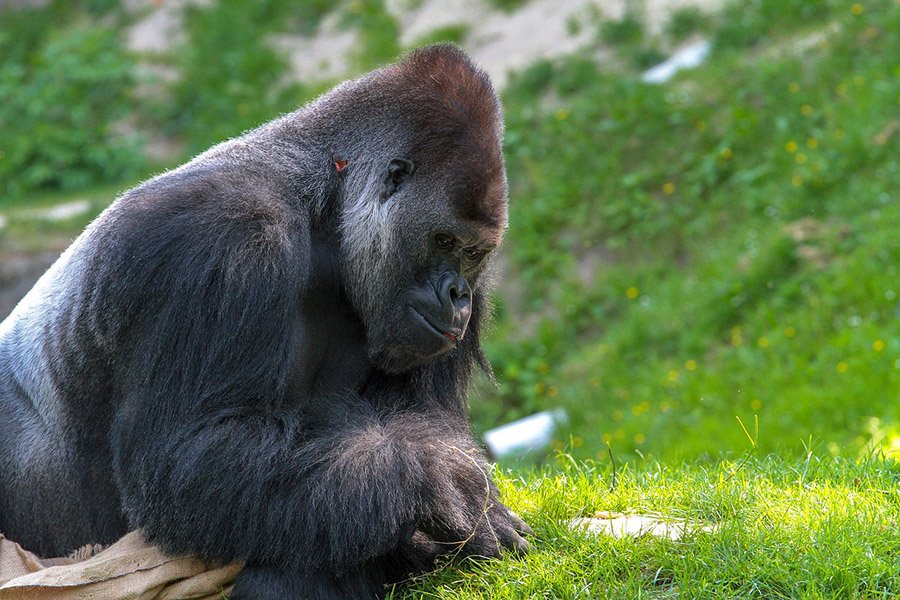
- Scientific Name: Gorilla spp.
- Type of Animal: Mammal (Primate)
- Where Found: Forests of central Sub-Saharan Africa.
Gorillas, the largest of all primates, command attention with their massive bodies, and their large heads are a significant part of their imposing presence. The robust skull of a gorilla, especially dominant male silverbacks, is equipped with a pronounced brow ridge and strong jaw muscles.
This allows them to consume their primarily herbivorous diet, which includes tough stems and leaves. Additionally, the size and shape of a gorilla’s head, particularly the silverback’s crest or sagittal crest, signify maturity and strength, playing a crucial role in displays of dominance within gorilla groups.
Did you know? While gorillas might appear menacing due to their size, they are generally gentle creatures and have been observed showing emotions similar to those of humans, such as laughter and sadness.
Hippopotamus
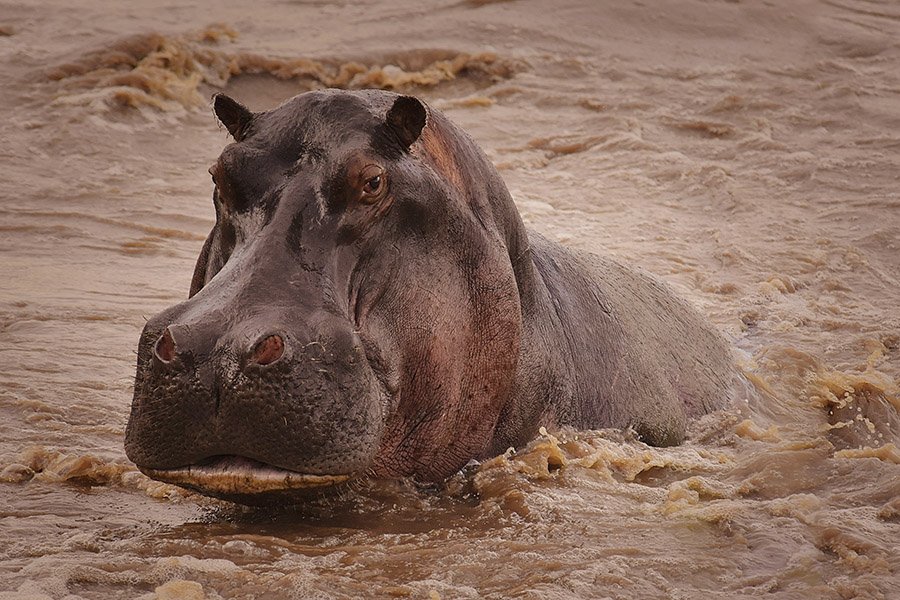
- Scientific Name: Hippopotamus amphibius
- Type of Animal: Mammal
- Where Found: Sub-Saharan Africa, near lakes, rivers, and swamplands.
Few animals can boast a head as uniquely massive as the hippopotamus. This semi-aquatic giant has a head that is designed for life in the water.
Their eyes, ears, and nostrils are positioned high on their skull, allowing them to see, hear, and breathe while the rest of their body is submerged. Their large mouth, capable of opening at almost 180 degrees, houses powerful jaws and long, sharp teeth, which they use both for grazing on grass and in territorial disputes.
Did you know? Despite their bulk, hippos are adept swimmers and can hold their breath underwater for up to 5 minutes. Additionally, their large canines, which can grow up to 20 inches, continuously grow throughout their lives.
Orca (Killer Whale)
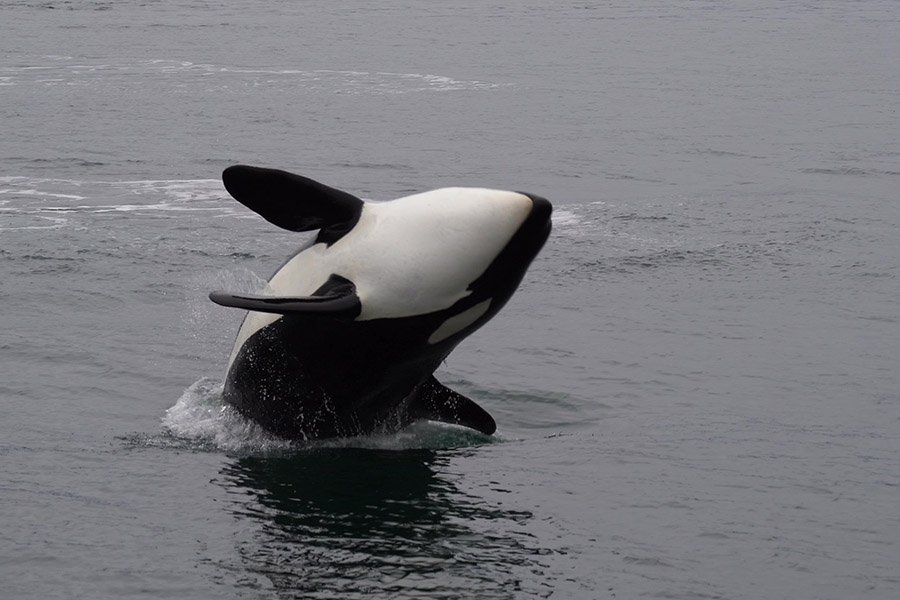
- Scientific Name: Orcinus orca
- Type of Animal: Mammal (Cetacean)
- Where Found: Oceans worldwide.
The orca, often known as the killer whale despite being a member of the dolphin family, is a symbol of power and intelligence in the vast expanse of the ocean. Their large heads house a brain that’s approximately five times the size of a human’s.
This brainpower plays a role in their sophisticated hunting techniques, social structures, and communication abilities. The orca’s distinct black and white patterned head and body also play a role in camouflage, helping them approach prey unnoticed in the shimmering depths of the ocean.
Did you know? Orcas exhibit a behavior known as “spy-hopping,” where they pop their heads out of the water to take a look around, which is believed to be a way to spot prey or navigate their surroundings.
Giant Panda
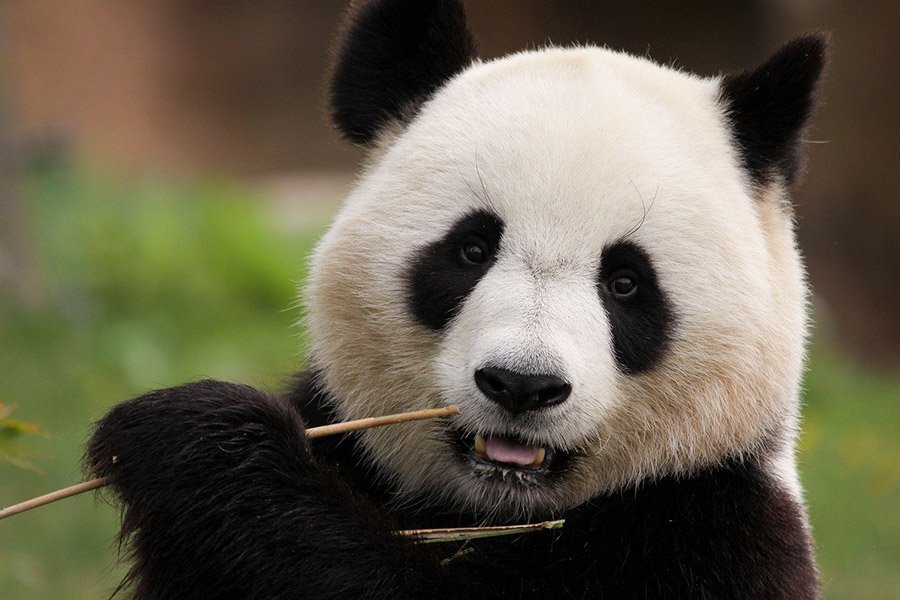
- Scientific Name: Ailuropoda melanoleuca
- Type of Animal: Mammal
- Where Found: Mountain forests in central China.
Giant pandas are not just symbols of conservation; they’re also an evolutionary marvel. With their broad faces and strong jaws, they’re uniquely equipped to munch on bamboo, their primary diet.
This large head accommodates powerful jaw muscles, allowing them to crush through the tough bamboo stalks and leaves. While bamboo makes up the majority of their diet, their ancestors were carnivores, and they still retain sharp canine teeth.
Did you know? Even though they are primarily herbivores, giant pandas still have the digestive system of a carnivore and can eat meat. Occasionally, they might snack on small animals or birds.
Caiman
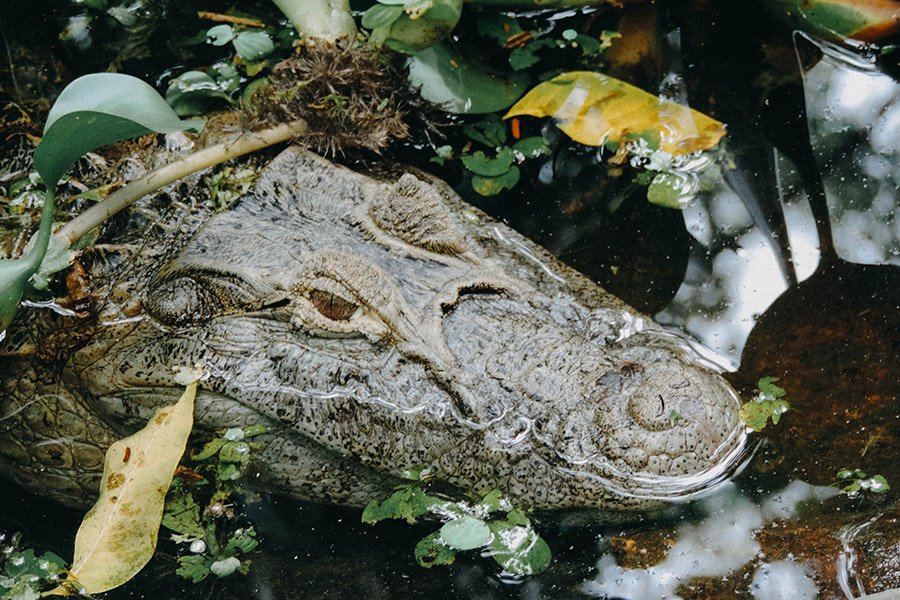
- Scientific Name: Caimaninae (subfamily encompassing all caiman species)
- Type of Animal: Reptile
- Where Found: Freshwater habitats in Central and South America.
Caimans, close relatives to alligators and crocodiles, have broad and flattened heads. These heads, especially prominent in species like the broad-snouted caiman, house sharp teeth and powerful jaws. Their large heads also accommodate sensory pits, which detect changes in water pressure, enabling them to sense nearby prey.
The size and shape of their skulls play a crucial role in their hunting strategy, allowing them to lie in wait, mostly submerged, and ambush unsuspecting prey.
Did you know? The skin behind a caiman’s jaw is sensitive to chemical changes in the water, acting as a sort of “chemical radar” to detect potential prey or threats.
Ocean Sunfish
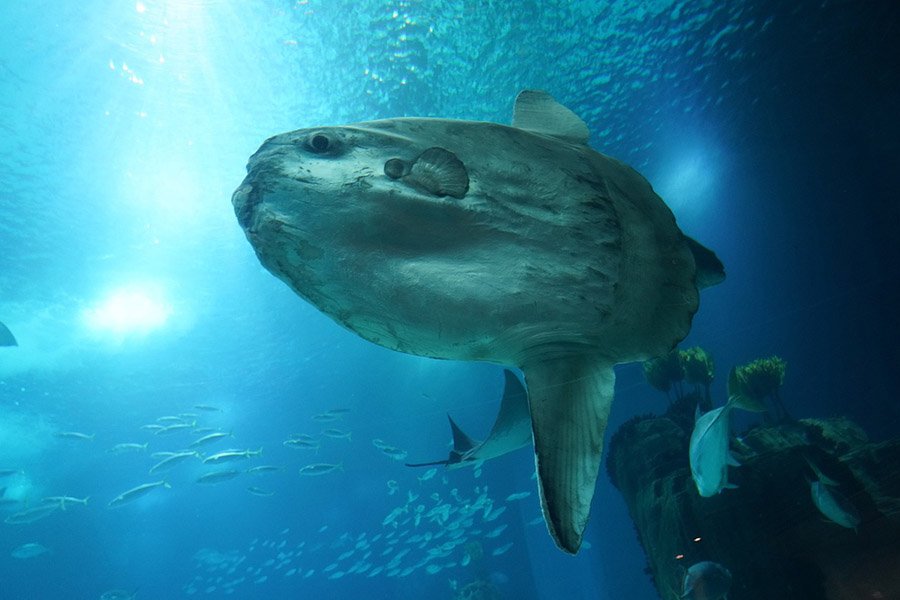
- Scientific Name: Mola mola
- Type of Animal: Fish
- Where Found: Tropical and temperate oceans globally.
The ocean sunfish, or common mola, with its bizarre and unique shape, is almost all head. It looks as if it’s a giant fish head with fins attached. This strange body shape allows the ocean sunfish to maneuver effortlessly, drifting with ocean currents and occasionally propelling itself with its large dorsal and anal fins.
Their primary diet consists of jellyfish, and their large mouth helps them consume significant quantities of this gelatinous prey.
Did you know? Despite their odd appearance and slow movement, the ocean sunfish can dive to depths of over 600 meters to search for food, and they’ve been known to leap out of the water, possibly to shake off parasites.
Warthog
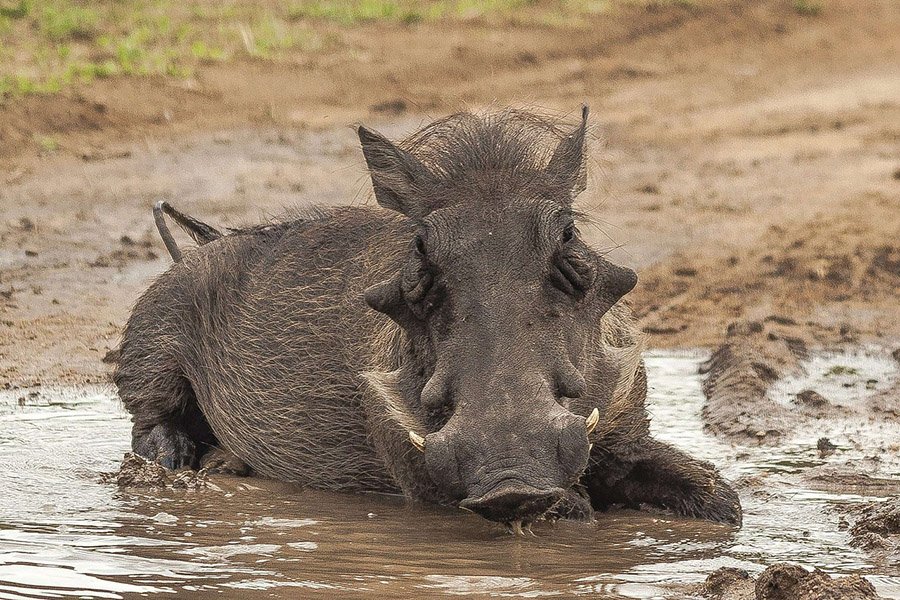
- Scientific Name: Phacochoerus africanus
- Type of Animal: Mammal
- Where Found: Grasslands, savannas, and woodlands of Sub-Saharan Africa.
Warthogs, with their large heads and iconic tusks, are a testament to nature’s adaptability. Their pronounced head houses two sets of tusks, which are actually elongated teeth. The larger, curved upper tusks are used primarily for digging and combat, while the lower, sharper tusks serve as effective defensive weapons.
The bulk of the head and the prominent facial “warts” or protuberances — from which they get their name — provide cushioning, especially during battles between males.
Did you know? Contrary to their somewhat fearsome appearance, warthogs are primarily grazers. They’re known to kneel on their front legs while eating, which allows them to get closer to the ground and access shorter grass.
The Fascinating Science Behind Animals with Large Heads
Nature’s design choices are rarely random. When an animal sports a large head relative to its body, it’s a result of millions of years of evolutionary adaptations, each tweaking and honing the creature for survival within its environment.
In many instances, a bigger cranium houses a larger brain, endowing the animal with enhanced cognitive abilities, complex social behaviors, or heightened sensory perceptions.
In others, it’s about power and function: robust jaws for effective feeding, broad skulls for protective or display structures, or spacious mouths to consume larger prey.
The wide heads of some aquatic creatures, for instance, aid in navigation or hunting within their watery domains. Every expansive noggin tells a story of ecological niches, predatory challenges, and the intricate ballet of evolution.


